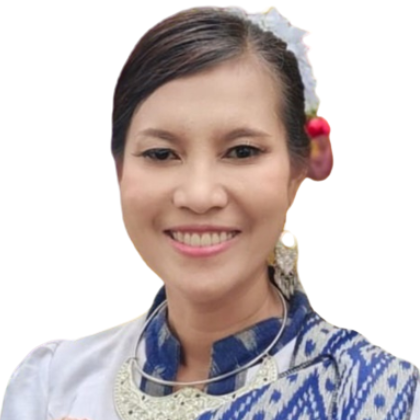Relationship Between History of Exclusive Breastfeeding, History of Complementary Breastfeeding, and Mother's Education with Stunting in Children 12-36 Months in Sidotopo Public Health Center Surabaya

Background: Stunting is one of the main health problems in Indonesia which is associated with an increased risk of disease, mortality, and a suboptimal brain development. The prevalence of stunting in East Java is 33,6% (above the national prevalence). Semampir District has a total of 1.399 stunting cases. Exclusive breastfeeding, appropriate complementary feeding, and maternal education can contribute to supporting child's health that can help prevent stunting.
Objectives: This study aims to analyze the relationship between a history of exclusive breastfeeding, a history of complementary feeding and maternal education with stunting in children age 12-36 months in the working area of the Sidotopo Public Health Center Surabaya.
Methods: This study was a cross sectional design with simple random sampling. The sample size were 78 children age 12-36 months in the Sidotopo Public Health Center working area. The instrument used was a questionnaire. Data analysis using Chi-square test.
Results: The results showed that there was no significant relationship between the history of exclusive breastfeeding (p=0.121), complementary feeding (p=0.185) and maternal education (p=0.919) with stunting in children 12-36 months, but most stunted children had a history of non-exclusive breastfeeding (44.4%), came from mothers with low education levels (36.9%) and had a history of inappropriate complementary feeding (42.3%).
Conclusions:There were many determinants of stunting in children, not only caused by exclusive breastfeeding, the pattern of complementary feeding, and maternal education, but also caused by factors such as birth weight, maternal nutritional status, birth length, hygiene and sanitation, and others.
Beal, T., Tumilowicz, A., Sutrisna, A., Izwardy, D., dan Neufeld, L. M. (2018) ‘A review of child stunting determinants in Indonesia', Maternal and Child Nutrition, 14(4), pp. 1–10. Available at: https://doi.org/10.1111/mcn.12617.
Dewi, S. dan Mu'minah, I. (2020) ‘Pemberian MP-ASI Tidak Berhubungan dengan Kejadian Stunting pada Anak Usia 1-3 Tahun di Wilayah Kerja Puskesmas Sumbang I Kabupaten Banyumas', Jurnal Ilmiah Rekam Medis dan Informatika Kesehatan, 10(1), pp. 5–10.
Dwitama, Y.S., Zuharini, Y. dan Djais, J. (2018) ‘Hubungan pemberian ASI Eksklusif dan Makanan Pendamping ASI terhadap Balita Pendek Usia 2 sampai 5 tahun di Kecamatan Jatinangor', Jurnal Sistem Kesehatan, 3(3), pp. 142–148.
Fitriani, D.A. dan Rohmah, F. (2020) ‘Relationship Between Exclusive Breastfeeding and Stunting in Under-five Children at Harjobinangun Village, Yogyakarta', in Childhood Stunting, Wasting, and Obesity, as the Critical Global Health Issues: Forging Cross-Sectoral Solutions. Master Program in Public Health, Universitas Sebelas Maret. Available at: https://doi.org/10.26911/the7thicph.03.45.
Frongillo, E. A., Nguyen, P. H., Saha, K. K., Sanghvi, T., Afsana, K., Haque, R., Baker, J., Ruel, M. T., Rawat, R., dan Menon, P. (2017) ‘Large-scale behavior-change initiative for infant and young child feeding advanced language and motor development in a cluster-randomized program evaluation in Bangladesh', Journal of Nutrition, 147(2), pp. 256–263. Available at: https://doi.org/10.3945/jn.116.240861.
Jama, A., Gebreyesus, H., Wubayehu, T., Gebregyorgis, T., Teweldemedhin, M., Berhe, T., dan Berhe, N. (2020) ‘Exclusive breastfeeding for the first six months of life and its associated factors among children age 6-24 months in Burao district, Somaliland', International Breastfeeding Journal, 15(1), pp. 1–8. Available at: https://doi.org/10.1186/s13006-020-0252-7.
Kemenkes (2018) Mengenal Stunting dan Gizi Buruk. Penyebab, Gejala, dan Mencegah. Available at: https://promkes.kemkes.go.id/?p=8486 (Accessed: 1 June 2022).
Kemenkes (2018) Riskesdas 2018 dalam angka. Available at: https://www.litbang.kemkes.go.id/laporan-riset-kesehatan-dasar-riskesdas/ (Accessed: 1 June 2022).
Mustamin, Asbar, R. dan Budiawan (2018) ‘Tingkat Pendidikan Ibu dan Pemberian ASI Eksklusif dengan Kejadian Stunting pada Balita di Provinsi Sulawesi Selatan', Media Gizi Pangan, 25(1), pp. 25–32.
Nabunya, P., Mubeezi, R. and Awor, P. (2020) ‘Prevalence of exclusive breastfeeding among mothers in the informal sector, Kampala Uganda', PLoS ONE, 15(9), pp. 1–14. Available at: https://doi.org/10.1371/journal.pone.0239062.
Ni'mah, C. dan Muniroh, L. (2015) ‘Hubungan Tingkat Pendidikan, Tingkat Pengetahuan dan Pola Asuh Ibu dengan Wasting dan Stunting pada Balita Keluarga Miskin', Media Gizi Indonesia, 10(1), pp. 84–90.
Nurkomala, S. (2017) Praktik Pemberian MP-ASI (Makanan Pendamping Air Susu Ibu) pada Anak Stunting dan Tidak Stunting Usia 6-24 Bulan. Universitas Diponegoro.
Pangesti, S.R., Amelia, R. dan Aulia, D. (2021) ‘Stunting Relationship With Development Of Children Age 12-36 Months In The Region Of The Sambong Blora', Journal of Applied Health Management and Technology, 3(1), pp. 32–39. Available at: http://ejournal.poltekkes-smg.ac.id/ojs/index.php/JAHMT.
PMK (2020) Standar Antropometri Anak. Available at: http://hukor.kemkes.go.id/uploads/produk_hukum/PMK_No__2_Th_2020_ttg_Standar_Antropometri_Anak.pdf (Accessed: 1 June 2022)
Sari, N., Manjorang, M. Y., Zakiyah, dan Randell, M. (2021) ‘Exclusive breastfeeding history risk factor associated with stunting of children aged 12–23 months', Kesmas: Jurnal Kesehatan Masyarakat Nasional, 16(1), pp. 28–32. Available at: https://doi.org/10.21109/KESMAS.V16I1.3291.
Sawitri, A.J., Purwanto, B. dan Irwanto (2021) ‘Birth Weight and Birth Length Affecting Stunting Incident in Toddler', Indonesian Midwifery and Health Sciences Journal, 5(3), pp. 325–332. Available at: https://doi.org/10.20473/imhsj.v5i3.2021.325-332.
Seipalla, F., Pratama, M. T. A., Syahrudin, N. R. F., Pratama, D. C., Wedyasantika, D., Akbas, A. M. I., Nuswantoro, D., dan Nasir, M. (2020) ‘Hubungan Pemberian ASI Eksklusif dan Pengetahuan Ibu Tentang Cara Menyusui Bayi dengan Stunting di Dusun Boro, Desa Sidodadi, Kecamatan Lawang', Jurnal Ilmiah Mahasiswa Kedokteran Indonesia, 8(1), pp. 1–7.
Tewabe, T., Mandesh, A., Gualu, T., Alem, G., Mekuria, G., dan Zeleke, H. (2017) ‘Exclusive breastfeeding practice and associated factors among mothers in Motta town, East Gojjam zone, Amhara Regional State, Ethiopia, 2015: A cross-sectional study', International Breastfeeding Journal, 12(1), pp. 1–7. Available at: https://doi.org/10.1186/s13006-017-0103-3.
Torlesse, H., Cronin, A. A., Sebayang, S. K., dan Nandy, R. (2016) ‘Determinants of stunting in Indonesian children: Evidence from a cross-sectional survey indicate a prominent role for the water, sanitation and hygiene sector in stunting reduction', BMC Public Health, 16(1). Available at: https://doi.org/10.1186/s12889-016-3339-8.
Tsaralatifah, R. (2020) ‘Faktor yang Berhubungan dengan Kejadian Stunting pada Baduta di Kelurahan Ampel Kota Surabaya', Amerta Nutr, 4(2), pp. 171–177. Available at: https://doi.org/10.2473/amnt.v4i2.2020.171-177.
Virginia, A., Maryanto, S. dan Anugrah, R.M. (2020) ‘The Correlation Between Complementary Feeding And First Complementary Feeding Time With Stunting In Children Of 6-24 Months In Leyangan Village, East Ungaran, Semarang Regency', Jurnal Gizi dan Kesehatan, 12(27), pp. 29–39.
Wandini, R., Rilyani dan Resti, E. (2021) ‘Pemberian Makanan Pendamping ASI (MP-ASI) Berhubungan dengan Kejadian Stunting pada Balita', Jurnal Kebidanan Masyarakat, 7(2), pp. 274–278.
WHO (2015) ‘Stunting in a nutshell'. Available at: ttps://www.who.int/news/item/19-11-2015-stunting-in-a-nutshell.
Zulkarnain, F., Sugeha, R. dan Mahmudiono, T. (2019) ‘People Empowerment To Increase An Exclusive Breastfeeding At Ampel Village Surabaya City', Jurnal Layanan Masyarakat Universitas Airlangga, 3(2), pp. 86–90.
Copyright (c) 2023 Hasna Izdihar, Arian Susanti Dewi Cahyani, Lailatul Muniroh

This work is licensed under a Creative Commons Attribution-ShareAlike 4.0 International License.
Media Gizi Kesmas by Unair is licensed under a Creative Commons Attribution-ShareAlike 4.0 International License.
1. The journal allows the author(s) to hold the copyright and to retain the publishing right of the article without restrictions.
2. The legal formal aspect of journal publication accessibility refers to Creative Commons Attribution-Share-Alike (CC BY-SA).
3. The Creative Commons Attribution-Share-Alike (CC BY-SA) license allows re-distribution and re-use of a licensed work on the conditions that the creator is appropriately credited and that any derivative work is made available under "the same, similar or a compatible license”. Other than the conditions mentioned above, the editorial board is not responsible for copyright violations.



















